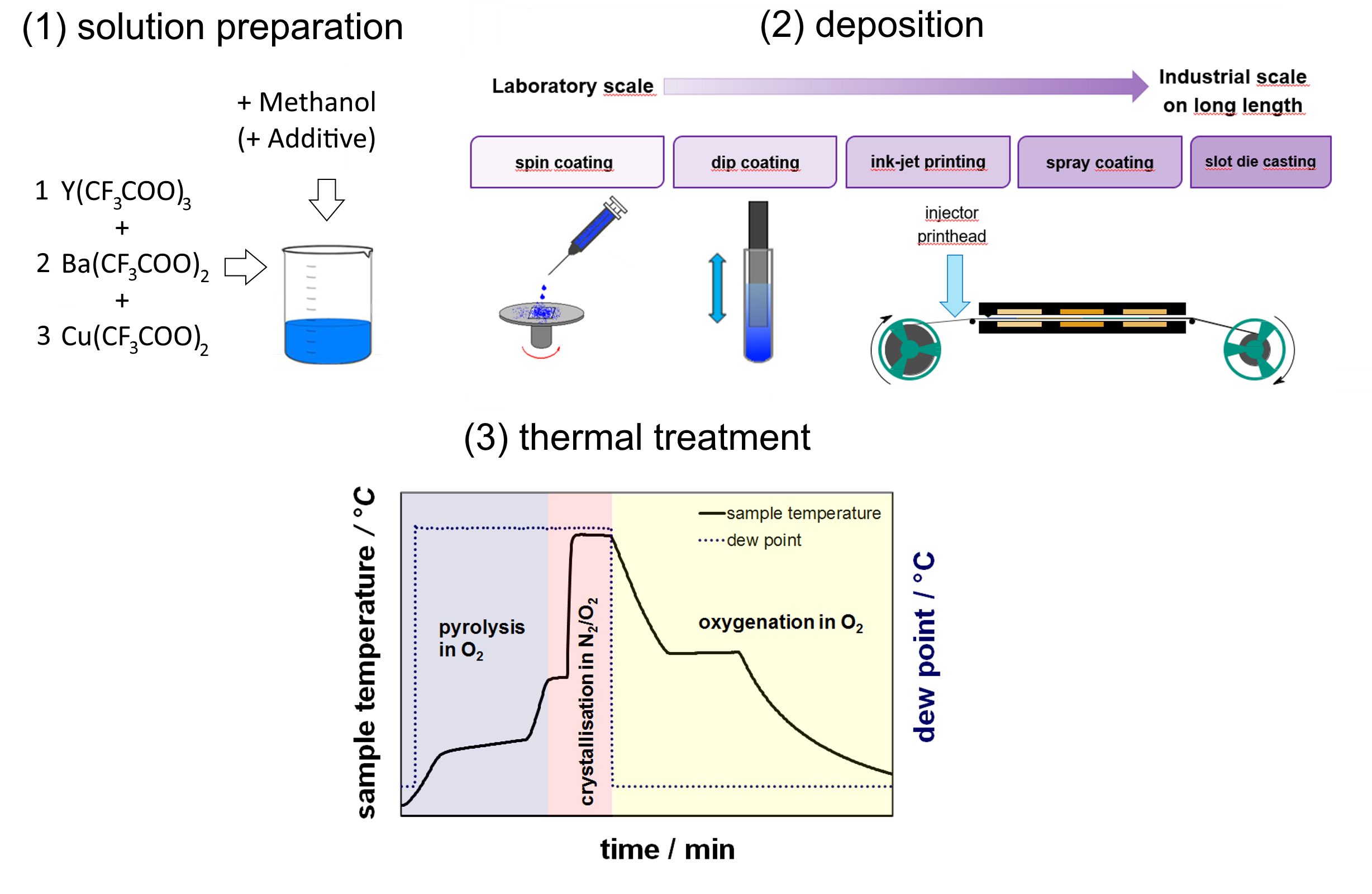Chemical solution deposition (CSD)
 Chemical solution deposition (CSD) is a method for the deposition of layers from a precursor solution and can be performed under atmospheric pressure. In particular, metalorganic deposition (MOD), a variant of CSD, is used for the production of high-temperature superconductors. This method is a particularly attractive field of research because it is easy to perform and, unlike PLD, does not require complex equipment, especially expensive vacuum technology. It is therefore very cost-effective and comparatively easy to scale up to industrial standards.
Chemical solution deposition (CSD) is a method for the deposition of layers from a precursor solution and can be performed under atmospheric pressure. In particular, metalorganic deposition (MOD), a variant of CSD, is used for the production of high-temperature superconductors. This method is a particularly attractive field of research because it is easy to perform and, unlike PLD, does not require complex equipment, especially expensive vacuum technology. It is therefore very cost-effective and comparatively easy to scale up to industrial standards.
Basically, the MOD process consists of three steps (see figure below) First a precursor solution must be prepared (step 1). In the second step this solution is applied to a carrier material (substrate). Depending on the scale, different coating processes can be used. On a laboratory scale, a rotation method ("spin coating") is generally used, which is also suitable for particularly small samples. For larger sample scales, dip coating processes are suitable, and for industrial scales, printing and spraying processes or slot nozzle coating are especially suitable for long lengths. In the third step, the initially gel-like film is subjected to a thermal treatment, which in turn consists of three process steps - the combustion of the organic components (pyrolysis), the crystallization of a low-oxygen preliminary phase of the REBCO superconductor and the oxygen loading or oxidation of the layer.
As with PLD, numerous different process parameters influence the growth of the layer. These include the properties of the solutions themselves, which depend, among other things, on the type of organometallic salts, the solvent and other possible solution additives and their concentrations. They influence the wettability on the substrate. Depending on the deposition process, certain viscosities in the solutions must be adjusted. The deposition parameters themselves (e.g. rotation or drawing speeds) influence above all the thickness and homogeneity of the layers. In the end, however, it is mainly the thermal treatment that determines whether and in which orientation the crystal structure of the superconductor grows. If optimum temperatures, heating rates, holding times, process gas compositions and gas flow velocities are achieved, the superconductor grows epitaxially with a biaxial c-axis texture on the substrate and can thus transport high superconductor currents in the strip direction.
Equipment
- Chemical laboratory
- Coating processes (Spincoater, Dipcoater, Slot nozzle, Sonoplot)
- Glove boxes
- Various three-zone tube furnaces up to 1x00 °C
- 6 m long 18-zone hinged tube furnace with reel-to-reel coating, vacuum pump (up to 1 mbar, 100 m³/h), gas supply and sensor technology (p, pO2)
